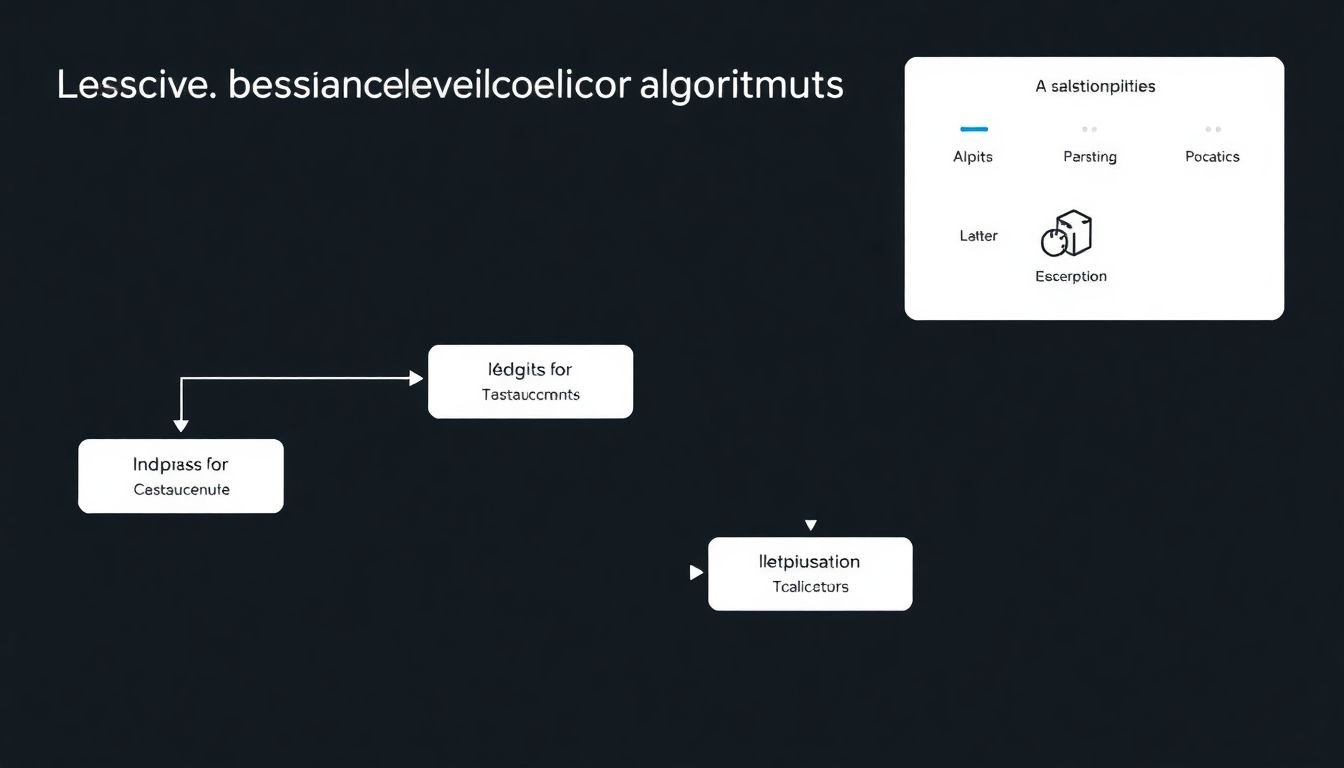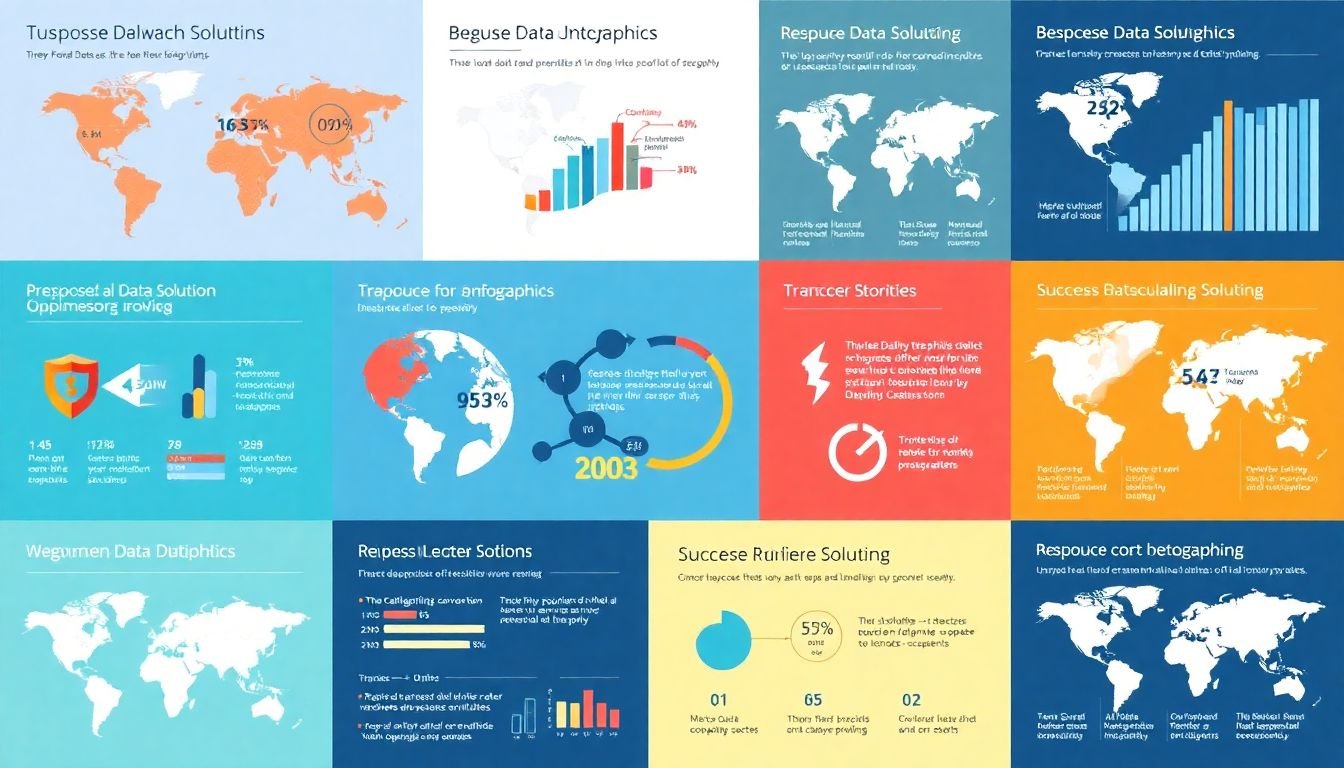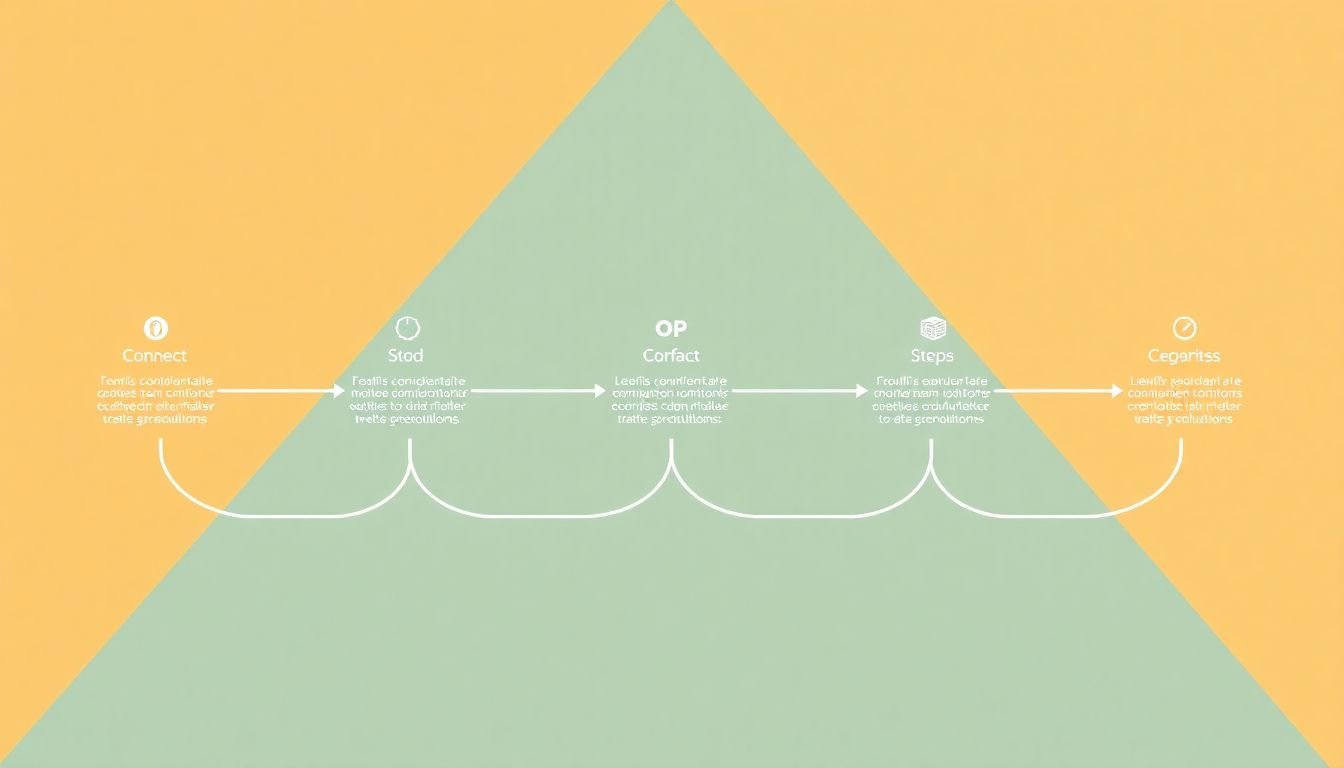
Table of Contents
In the digital age, businesses are awash with data, yet finding meaningful insights and solutions tailored to unique challenges can feel like searching for a needle in a haystack. This is where bespoke data solutions and custom algorithms come into play, offering a precision toolkit for data-driven problem solving. But why stop at off-the-shelf solutions when you can have a data strategy as unique as your business?
Consider this: 97.2% of businesses collect data, but only 0.5% actually use it to drive business outcomes (Source: Forbes). This gap highlights a pressing need for custom data solutions that can transform raw data into actionable insights and competitive advantages. So, the question remains, how can you ensure that your data is working as hard as you are?
This article, ‘Bespoke Data Solutions: Crafting Custom Algorithms for Unique Business Challenges’, agrees that one size does not fit all when it comes to data. We promise to delve into the art of crafting custom algorithms, exploring how they can be tailored to your specific business needs. By the end of this article, you will gain a clear understanding of how bespoke data solutions can revolutionize your approach to data, empowering you to make informed decisions and stay ahead of the competition.
Imagine, for a moment, a tailor-made data strategy that understands your business intricacies, speaks your language, and delivers insights that are as unique as your fingerprint. This is not just a dream; it’s the reality of bespoke data solutions. So, let’s embark on this journey together, as we explore how custom algorithms can unlock the true potential of your data.
Tailoring Data-Driven Strategies to Unlock Your Business’s Full Potential
In today’s data-rich world, businesses possess a treasure trove of information that, when harnessed effectively, can unlock their full potential. Tailoring data-driven strategies is akin to crafting a bespoke suit for your business
- it’s about understanding the unique shape and needs of your organization, then using data to create a perfectly fitting plan. This isn’t just about crunching numbers; it’s about transforming raw data into actionable insights that can guide your business decisions. Imagine data as the fabric, and your business as the tailor’s dummy. By carefully measuring and understanding your business’s unique metrics, you can weave a strategy that fits like a glove. This strategy should be dynamic, evolving with your business and the ever-changing data landscape. It’s about using data to predict trends, optimize processes, and make informed decisions that drive growth. So, let’s roll up our sleeves, dive into the data, and start tailoring a strategy that will help your business stand out in the crowd.

The Art of Bespoke Data Solutions
In the dynamic realm of data management, the term ‘bespoke’ is not merely a fancy word for ‘custom,’ but a philosophy that embodies the art of tailoring data solutions to fit the unique needs and goals of an organization like a perfectly fitted suit. Bespoke data solutions are not one-size-fits-all; they are meticulously crafted, taking into account the specific data landscape, business objectives, and challenges of each client.
The process begins with a deep dive into understanding the client’s data ecosystem, their business processes, and their strategic aspirations. This is followed by a careful analysis of their data, identifying its quality, quantity, and relevance. Only then does the creation of a bespoke solution commence, a process that involves a blend of art and science.
Bespoke data solutions differ significantly from off-the-shelf solutions. The latter are generic, designed to cater to the broadest range of users, often leading to a one-size-fits-none scenario. They lack the precision and personalization that bespoke solutions offer. Moreover, off-the-shelf solutions may not align with an organization’s specific data governance policies or regulatory compliance needs.
In today’s data-driven business landscape, the importance of bespoke data solutions cannot be overstated. With the sheer volume and variety of data available, a cookie-cutter approach simply won’t suffice. Businesses need solutions that can adapt to their unique data environments, integrate seamlessly with their existing systems, and evolve with their changing needs. Bespoke data solutions offer this flexibility and adaptability, providing a competitive edge in the data race. They are not just about managing data; they are about unlocking its potential, turning raw data into actionable insights that drive business growth and innovation.

Understanding Your Business’s Unique Data Challenges
Embarking on the journey to understand your business’s unique data challenges is akin to navigating a complex, uncharted territory. The first step,
- Assessment
involves a comprehensive evaluation of your business operations, processes, and goals. This is where you identify the data that matters most
- the data that can drive growth, improve efficiency, or provide competitive advantage.
Next,
- Data Profiling
comes into play. This is the process of understanding the structure, content, and quality of your data. It’s like meeting your data for the first time
- you need to know what you’re working with.
However, understanding your data challenges isn’t just about knowing what data you have, but also about knowing what you don’t have. This leads us to
- Data Gap Analysis
, where you identify the data that’s missing, the data that could fill in the blanks and provide a more complete picture.
Deep data analysis is the backbone of this process. It’s not just about crunching numbers, but about uncovering insights, trends, and patterns that can inform business decisions. It’s about asking the right questions and letting the data tell its story.
Once you’ve identified and understood your unique data challenges, you’re ready for the final step
- crafting bespoke algorithms. These algorithms are tailored to your business, designed to solve your specific data challenges. They’re the tools that will help you turn data into actionable insights, and insights into business value.

The Bespoke Algorithm Development Process
The bespoke algorithm development process is a meticulous journey that transforms raw data into intelligent, tailored solutions. Let’s delve into the step-by-step process, each stage as crucial as the last, like a well-oiled machine.
The adventure begins with data collection. This is akin to gathering ingredients for a recipe. We scour databases, APIs, or even the physical world to amass data relevant to our goal. It’s not just about quantity; quality matters too. We ensure our data is clean, representative, and ethically sourced.
Next, we embark on data preprocessing. Think of this as chopping and measuring our ingredients. We handle missing values, outliers, and inconsistencies. We might normalize data, encode categorical variables, or apply dimensionality reduction techniques. The goal? To make our data ready for the algorithm’s hungry appetite.
Now, it’s time to choose our model. This is where we decide what kind of algorithm to use, based on our problem type
- classification, regression, clustering, or something else. We might use a tried-and-true method like logistic regression, or we might explore neural networks or decision trees. It’s a bit like choosing the right tool for the job.
With our model selected, we move on to training. Here, we feed our preprocessed data into the algorithm, allowing it to learn patterns and relationships. It’s like teaching a child to recognize cats
- it needs examples to learn from.
Once trained, we evaluate our model. We use a separate dataset, unseen by the model during training, to test its performance. We calculate metrics like accuracy, precision, recall, or F1-score, depending on our problem. It’s like giving our child a pop quiz on cat recognition.
Finally, we optimize. If our model’s performance isn’t up to snuff, we tweak its parameters, try different models, or collect more data. We might use techniques like cross-validation or regularization to prevent overfitting. It’s a iterative process, much like refining a recipe based on taste tests.
And there you have it
- the bespoke algorithm development process, from start to finish. Each step is vital, each step is interesting, and each step brings us one step closer to our algorithmic masterpiece.

The Power of Custom Data-Driven Problem Solving
In the dynamic landscape of today’s business world, data has emerged as a powerful tool, transforming the way we approach problem-solving. The power of custom data-driven problem-solving lies in its ability to transcend the limitations of one-size-fits-all solutions, offering tailored, precise, and actionable insights. By leveraging bespoke algorithms, we can unlock the full potential of our data, leading to more accurate predictions, enhanced decision-making, and ultimately, driving business growth.
Imagine a retail store that wants to optimize its inventory management. Instead of relying on generic industry standards, they could develop a custom algorithm that considers their unique sales patterns, customer demographics, and seasonal trends. This algorithm could predict demand with unprecedented accuracy, reducing overstock and understock, and maximizing profit. This is just one example of how custom data-driven problem-solving can provide a competitive edge.
Moreover, bespoke algorithms can significantly improve decision-making processes. They can analyze vast amounts of data, identifying complex patterns and correlations that humans might miss. For instance, a custom algorithm could help a marketing team understand which combination of channels and messages resonates most with their target audience, leading to more effective campaigns and better return on investment.
But the advantages don’t stop at improved predictions and decision-making. Custom data-driven problem-solving can also drive business growth by uncovering new opportunities. By analyzing customer behavior data, a custom algorithm might identify a previously untapped market segment, or suggest innovative product offerings. It could even predict emerging trends, allowing businesses to stay ahead of the curve.
In essence, the power of custom data-driven problem-solving lies in its ability to turn data into a strategic asset. It’s not just about processing data; it’s about understanding it, learning from it, and using it to drive business forward. So, the next time you’re faced with a complex business challenge, consider the power of a custom, data-driven approach. It could be the key to unlocking your business’s full potential.

Case Studies: Bespoke Data Solutions in Action
In the dynamic landscape of modern business, data has emerged as a powerful tool, driving informed decisions and propelling growth. However, one size doesn’t fit all when it comes to data management and analysis. This is where bespoke data solutions shine, tailoring data strategies to meet the unique needs of businesses. Let’s delve into two compelling case studies that illustrate the transformative power of custom data solutions.
Our first case involves ‘GreenLeaf’, a sustainable farming cooperative facing challenges in predicting crop yields. Their traditional methods were inconsistent and couldn’t account for the complex interplay of weather, soil, and genetic factors. To tackle this, we developed a bespoke data solution. Our team of data scientists created a predictive model using machine learning algorithms, incorporating historical weather data, soil nutrient levels, and genetic information. The model was trained on GreenLeaf’s specific crop varieties, making it uniquely tailored to their needs. The outcome? GreenLeaf achieved a 35% increase in yield prediction accuracy, enabling them to optimize resource allocation and plan harvests more effectively.
Next, consider ‘MelodyMinds’, a music streaming service struggling with user churn. They needed a way to understand and predict user behavior to retain subscribers. Our solution was a custom-built churn prediction model. We began by cleaning and analyzing MelodyMinds’ user data, identifying key factors influencing churn. Our data scientists then developed a predictive algorithm using these factors, enabling MelodyMinds to segment users based on their likelihood to churn. The model also provided actionable insights, such as offering personalized playlists or discounts to at-risk users. The result? MelodyMinds saw a 28% reduction in user churn, demonstrating the value of bespoke data solutions in driving business success.

Overcoming Challenges in Bespoke Algorithm Development
Bespoke algorithm development, while rewarding, is not without its hurdles. One of the most significant challenges is data quality. Inaccurate, incomplete, or biased data can lead to flawed algorithms, akin to building a house on shaky foundations. To overcome this, it’s crucial to invest time in data cleaning and preprocessing. This includes handling missing values, removing duplicates, and addressing outliers. Additionally, data validation techniques can help ensure the data’s integrity and reliability.
Model complexity is another challenge that often arises. As algorithms become more sophisticated to handle complex tasks, they can become increasingly difficult to understand and maintain. This can lead to issues with debugging, updating, and explaining the model’s decisions. To tackle this, it’s essential to strike a balance between model complexity and interpretability. Techniques like dimensionality reduction, model simplification, and using interpretable models can help. Furthermore, regular code reviews and documentation can make the model’s inner workings more accessible.
Interpretability is a challenge that’s often overlooked but is crucial, especially in industries where explainable AI is a must. Black-box models, while powerful, can be challenging to interpret. To overcome this, it’s important to use techniques like LIME or SHAP for local interpretations, or use inherently interpretable models like decision trees. Moreover, involving domain experts in the development process can provide valuable insights into the model’s behavior.
Lastly, it’s important to remember that overcoming these challenges is an iterative process. It’s rare that an algorithm works perfectly on the first try. Therefore, it’s crucial to have a robust testing and validation process in place. This includes using techniques like cross-validation, A/B testing, and regular model performance evaluations. By continually refining and improving the algorithm, we can overcome these challenges and develop bespoke algorithms that are not only powerful but also reliable and interpretable.

The Future of Bespoke Data Solutions
In the dynamic landscape of data management, bespoke data solutions are poised to evolve significantly, driven by several compelling trends. At the forefront of these is the rise of artificial intelligence (AI) and machine learning (ML). These technologies are set to revolutionize bespoke data solutions by enabling predictive analytics, automated data processing, and real-time insights. AI and ML can learn from and adapt to changing data patterns, making bespoke solutions more intelligent and responsive than ever before.
The increasing importance of data privacy is another trend shaping the future of bespoke data solutions. With stringent regulations like GDPR and CCPA, businesses are under pressure to protect sensitive data. Bespoke solutions will need to integrate robust privacy measures, such as differential privacy, secure multi-party computation, and federated learning. These techniques allow data analysis without compromising privacy, ensuring that bespoke solutions can operate within legal and ethical boundaries.
Edge computing, the third trend, is set to transform how bespoke data solutions process and store data. By moving data processing closer to the source, edge computing reduces latency, improves efficiency, and enhances security. In the future, bespoke data solutions will likely leverage edge computing to provide real-time insights, support IoT devices, and enable autonomous systems. This shift will require solutions to be designed with decentralization and local processing in mind.
These trends will collectively shape the future of bespoke data solutions, making them more intelligent, private, and efficient. As AI and ML advance, bespoke solutions will become more proactive, anticipating and addressing data needs before they arise. With a heightened focus on privacy, these solutions will protect sensitive data while still providing valuable insights. And with the integration of edge computing, bespoke data solutions will be faster, more reliable, and better equipped to support the data needs of the future.

Getting Started with Bespoke Data Solutions
Embarking on a journey to implement bespoke data solutions can seem daunting, but with the right approach, it can transform your business. Let’s break down the process into manageable steps.
Firstly, identify your data challenges. Every business has unique data needs. Begin by understanding what data-driven decisions you want to make. Are you looking to improve customer segmentation, optimize operations, or enhance predictive analytics? Once you’ve pinpointed your goals, assess your current data landscape. What data do you have? What data are you missing? This self-evaluation will help you define your data strategy.
Next, find the right partners. Building a bespoke data solution often requires expertise beyond your in-house capabilities. Look for partners who understand your industry, have a proven track record, and align with your business values. Here are some steps to help you:
- Define your requirements clearly.
- Conduct thorough research and ask for referrals.
- Evaluate potential partners based on their expertise, past projects, and cultural fit.
- Narrow down your list and engage in detailed discussions before making a decision.
Finally, build a successful data strategy. With your data challenges identified and your partners selected, it’s time to develop a roadmap. Here’s how:
- Start with a pilot project to test the waters and validate your approach.
- Ensure your strategy aligns with your business objectives and can scale as your business grows.
- Plan for data governance and security from the outset. This includes data privacy, access controls, and disaster recovery.
- Regularly review and update your strategy to adapt to changing business needs and technological advancements.
Remember, building a bespoke data solution is a journey, not a destination. With careful planning, the right partners, and a flexible strategy, you’ll be well on your way to unlocking the power of data for your business.
FAQ
What are bespoke data solutions and how do they differ from off-the-shelf data tools?
How are bespoke algorithms developed for data-driven problem solving?
- experimenting with different machine learning techniques,
- evaluating their performance using appropriate metrics,
- and refining the models based on feedback and results.
Once an algorithm is deemed effective, it is integrated into the bespoke data solution and thoroughly tested before deployment.
What kind of businesses can benefit from bespoke data solutions?
- small to medium-sized businesses looking to gain a competitive edge through data-driven insights,
- large enterprises seeking to optimize complex operations,
- or industries with specific data regulations or compliance requirements.
Essentially, any business that has data that could be better leveraged to drive growth, improve efficiency, or mitigate risks can benefit from bespoke data solutions.
How long does it take to develop a bespoke data solution?
Can bespoke data solutions be scaled or updated over time?
- adding new data sources,
- updating algorithms to improve performance,
- or integrating with new tools or systems.
Regular reviews and updates are a key part of maintaining the effectiveness of a bespoke data solution over time.
How is the success of a bespoke data solution measured?
- improvements in key performance indicators (KPIs),
- reductions in operational costs,
- or increases in revenue driven by data-driven decisions.
Qualitative metrics might include
- improvements in data literacy among staff,
- increased user satisfaction with the data tools,
- or enhanced data-driven culture within the organization.
Regular reviews and reporting on these metrics help to ensure that the bespoke data solution continues to deliver value and aligns with business objectives.
What kind of data privacy and security measures are in place for bespoke data solutions?
- encryption of data at rest and in transit,
- access controls to limit who can access sensitive data,
- regular security audits and penetration testing,
- compliance with relevant data protection regulations, such as GDPR or CCPA,
- and transparent data governance policies.
Additionally, bespoke data solutions are often developed using secure, proven technologies and best practices in data management.
How can businesses ensure they are working with a reputable provider of bespoke data solutions?
- a proven track record of delivering successful bespoke data solutions,
- expertise in relevant data technologies and methodologies,
- a clear understanding of the business’s unique needs and challenges,
- transparent communication and project management processes,
- compliance with relevant data protection regulations,
- and positive testimonials or case studies from satisfied clients.
It’s also a good idea to have detailed discussions with potential providers about their approach to data security, data governance, and project delivery.
How can businesses get started with developing a bespoke data solution?
- identifying specific business objectives,
- understanding the data landscape and what data is available,
- and assessing the current data management and analysis capabilities.
Once this is done, businesses can start to explore potential data solutions, including bespoke algorithms, and begin the process of developing a proof of concept or minimum viable product (MVP). Throughout this process, it’s important to involve stakeholders from across the business to ensure that the bespoke data solution meets their needs and aligns with business objectives.